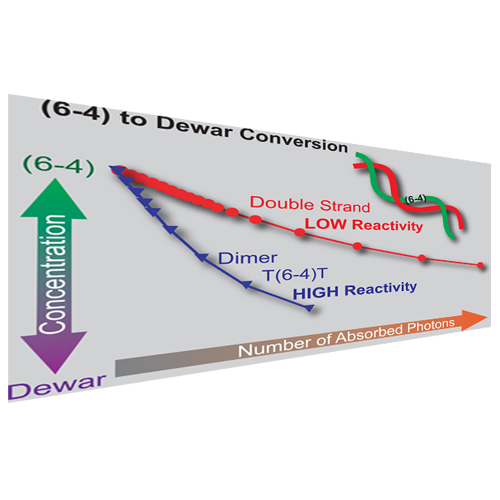Dewar Lesion Formation in Single- and Double-Stranded DNA is Quenched by Neighboring Bases
23-Jun-2015
J. Phys. Chem. B, 2015, DOI: 10.1021/acs.jpcb.5b04694, 119 (28), pp 8685–8692 published on 23.06.2015
J. Phys. Chem. B, online article
UV-induced Dewar lesion formation is investigated in single- and double-stranded oligonucleotides with ultrafast vibrational spectroscopy. The quantum yield for the conversion of the (6–4) lesion to the Dewar isomer in DNA strands is reduced by a factor of 4 in comparison to model dinucleotides. Time resolved spectroscopy reveals a fast process in the excited state with spectral characteristics of bases which are adjacent to the excited (6–4) lesion. These kinetic components have large amplitudes and indicate that an additional quenching channel acts in the stranded DNA systems and reduces the Dewar formation yield. Presumably relaxation evolves via a charge transfer to the neighboring guanine and the paired cytosine participates in a double-stranded oligomer. Changes in the decay of the relaxed excited electronic state of the (6–4) chromophore point to modifications in the excited state energy landscape which may lead to an additional reduction of the Dewar formation yield.











